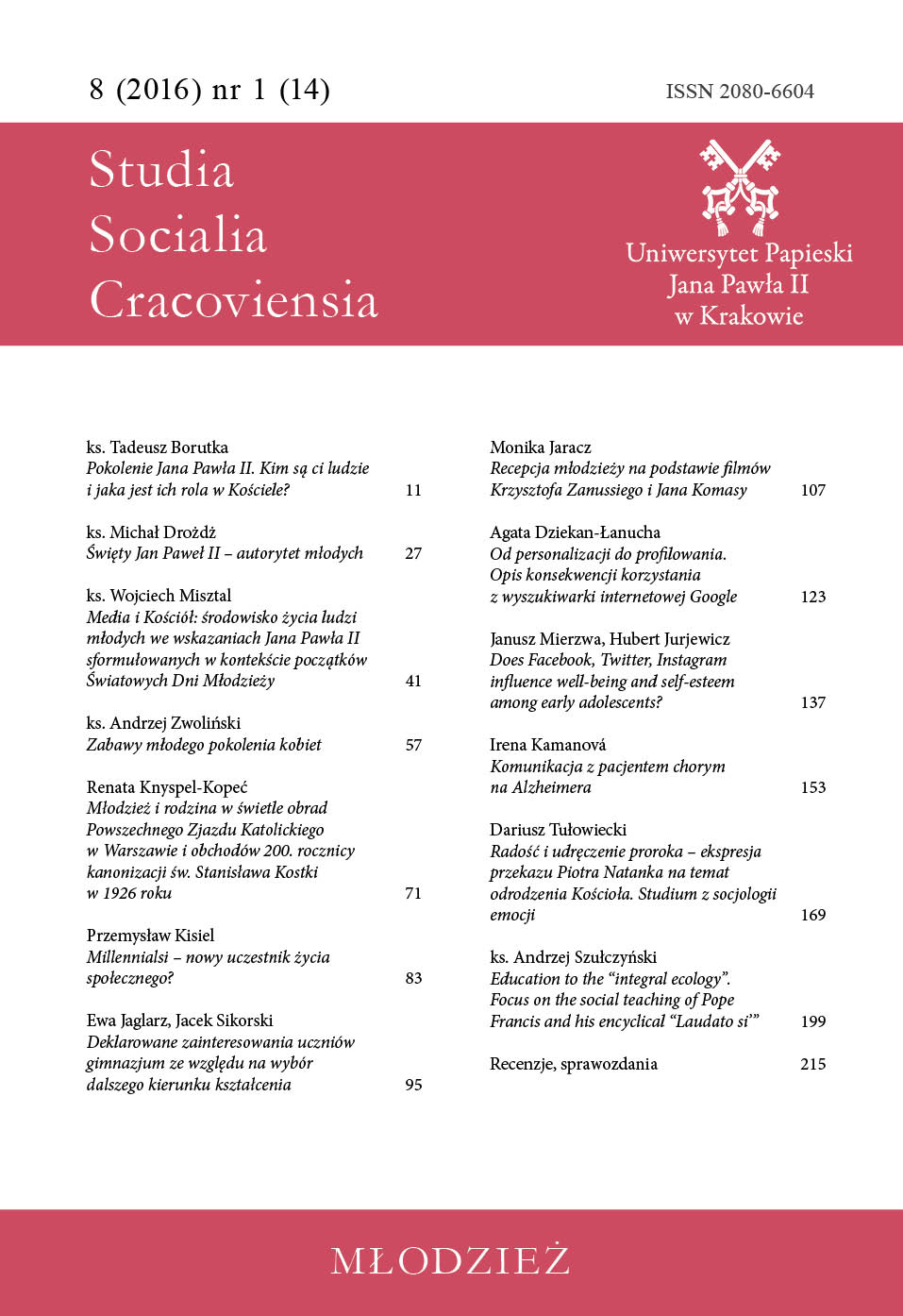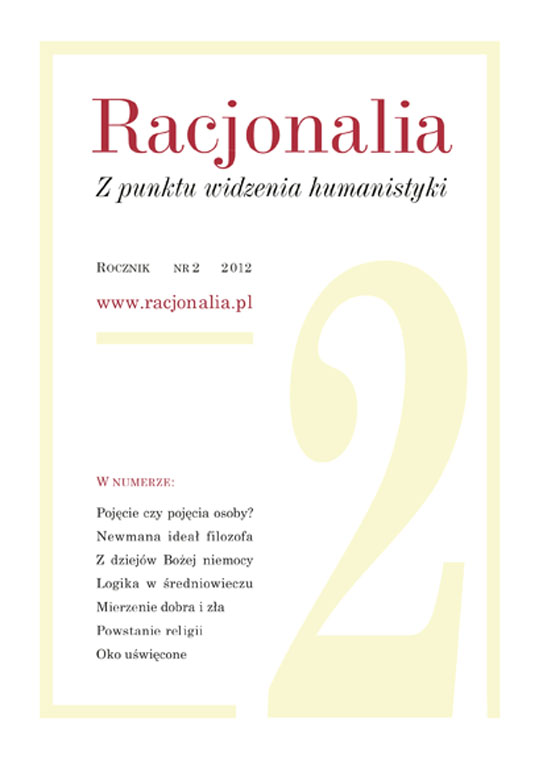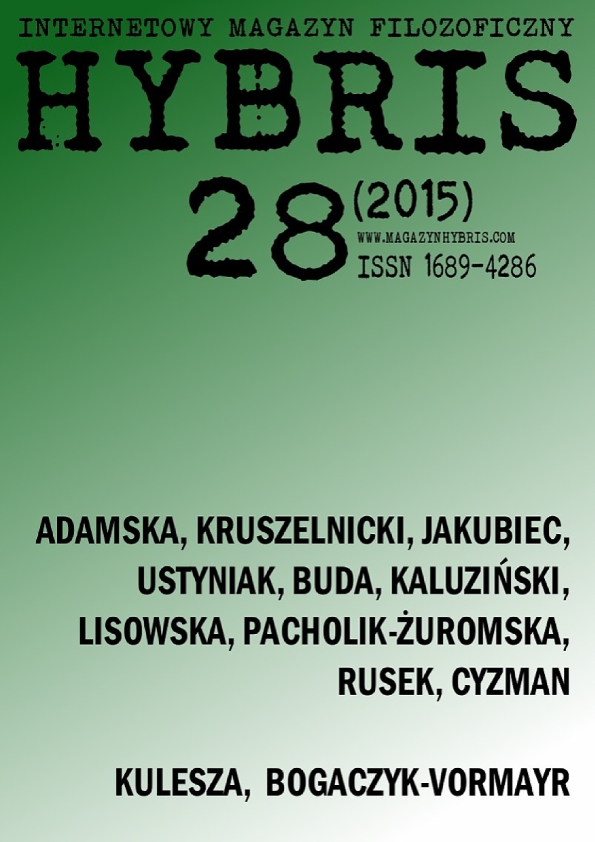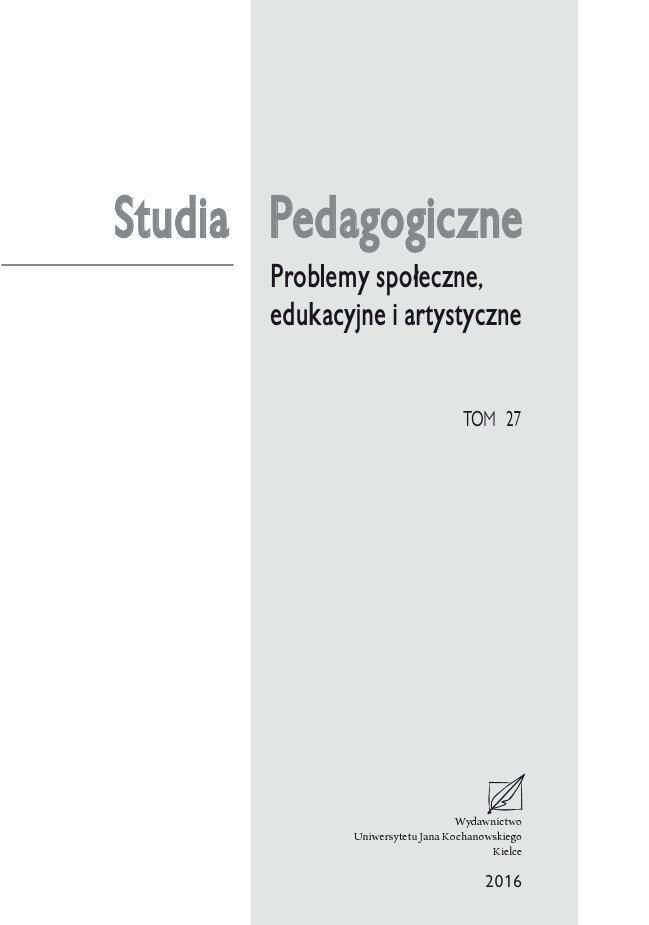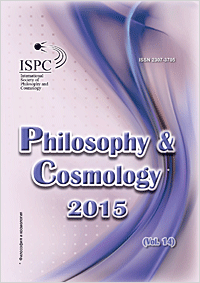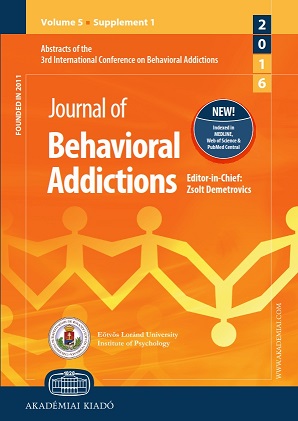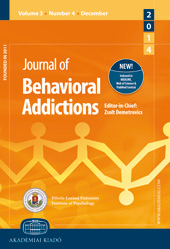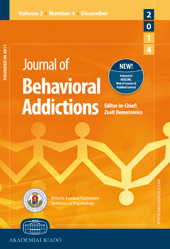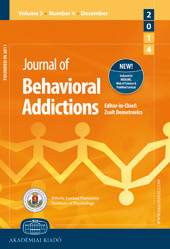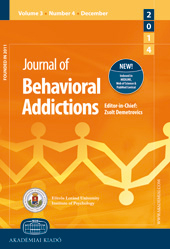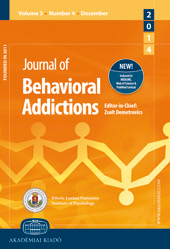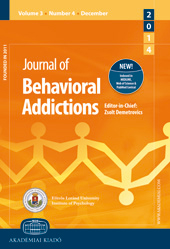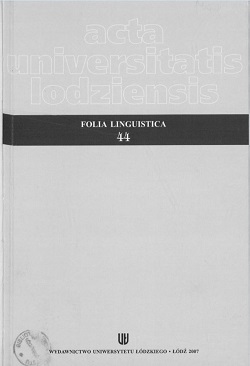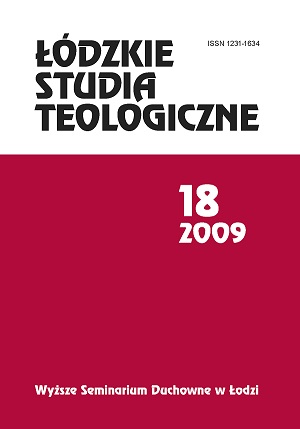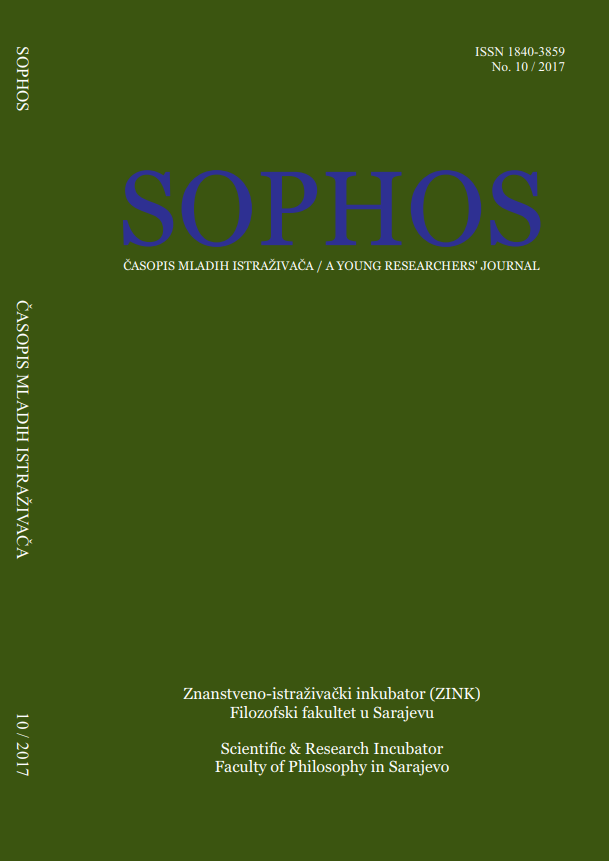Author(s): Belinda C. Goodwin,Matthew Browne,Matthew J. Rockloff,Phillip Donaldson / Language(s): English
Issue: 3/2015
A diverse class of stimuli, including certain foods, substances, media, and economic behaviours, may be described as ‘reward-oriented’ in that they provide immediate reinforcement with little initial investment. Neurophysiological and personality concepts, including dopaminergic dysfunction, reward sensitivity and rash impulsivity, each predict the existence of a latent behavioural trait that leads to increased consumption of all stimuli in this class. Whilst bivariate relationships (co-morbidities) are often reported in the literature, to our knowledge, a multivariate investigation of this possible trait has not been done. We surveyed 1,194 participants (550 male) on their typical weekly consumption of 11 types of reward-oriented stimuli, including fast food, salt, caffeine, television, gambling products, and illicit drugs. Confirmatory factor analysis was used to compare models in a 3×3 structure, based on the definition of a single latent factor (none, fixed loadings, or estimated loadings), and assumed residual covariance structure (none, a-priori / literature based, or post-hoc / data-driven). The inclusion of a single latent behavioural ‘consumption’ factor significantly improved model fit in all cases. Also confirming theoretical predictions, estimated factor loadings on reward-oriented indicators were uniformly positive, regardless of assumptions regarding residual covariances. Additionally, the latent trait was found to be negatively correlated with the non-reward-oriented indicators of fruit and vegetable consumption. The findings support the notion of a single behavioural trait leading to increased consumption of reward-oriented stimuli across multiple modalities. We discuss implications regarding the concentration of negative lifestyle-related health behaviours.
More...
